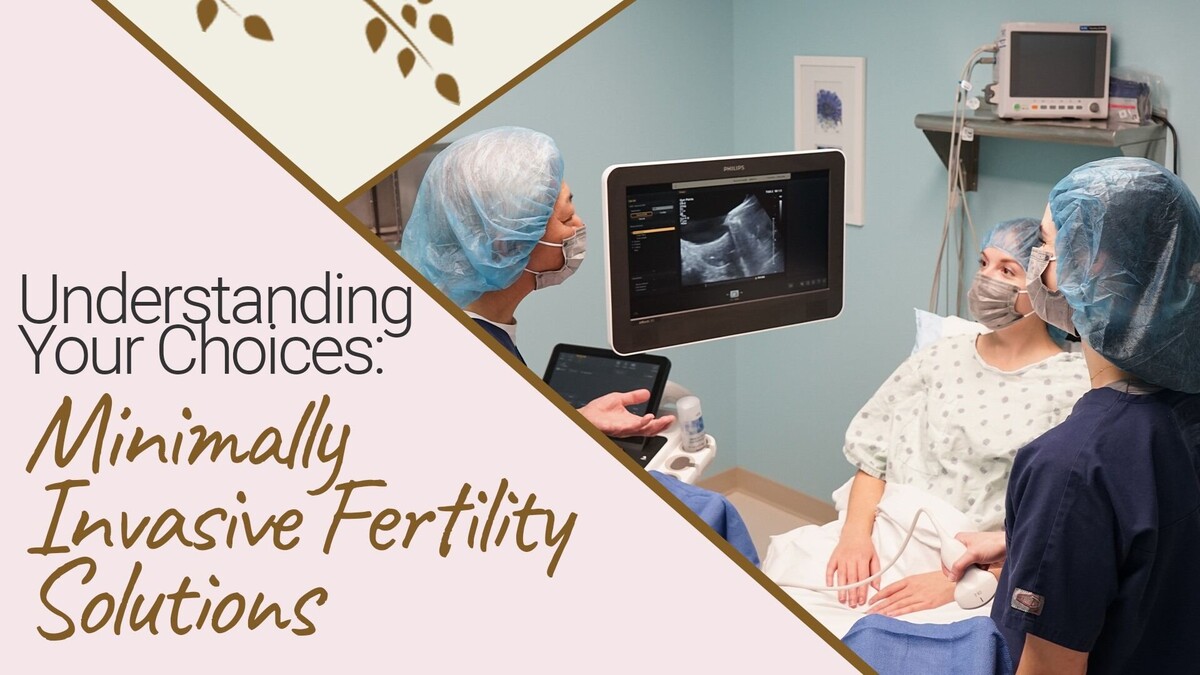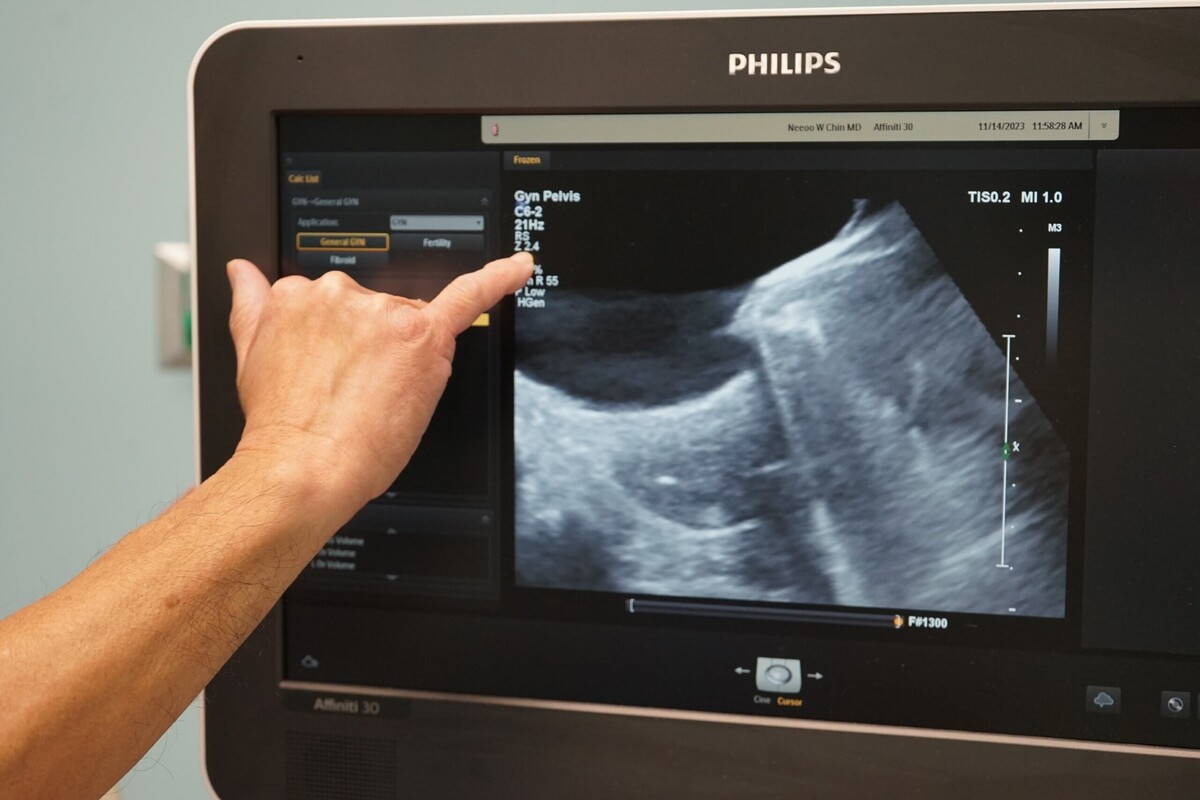Understanding Your Choices: Minimally Invasive Fertility Solutions

Navigating fertility options can sometimes feel overwhelming, but discovering the right path can bring clarity and hope. If you’re feeling uncertain, know that you’re not alone—we understand how personal and profound this journey is. At The Fertility Wellness Institute of Ohio, we’re dedicated to providing compassionate, patient-focused care to support every step of your journey to parenthood.
Today, we’re discussing minimally invasive fertility treatments—procedures designed to address fertility challenges with little physical intervention. For many, minimally invasive treatments are a preferred choice due to their lower risk, reduced recovery time, and the potential for less discomfort compared to more invasive procedures. These options are ideal for people looking to address fertility challenges while minimizing physical and emotional stress – and might be the right option to help you move forward with confidence.
Exploring Minimally Invasive Treatment Options
Our institute offers a range of minimally invasive treatments, tailored to diagnose or manage specific reproductive issues. These advanced techniques help achieve your fertility goals with minimal disruption and maximum precision.

Saline Infusion Sonography (SIS)
Saline Infusion Sonography (SIS), also known as a saline sonogram or SIS ultrasound, is a specialized diagnostic procedure that enhances ultrasound imaging of the uterus. By introducing a sterile saline solution into the uterine cavity, the SIS procedure allows for a clearer view of the uterine lining, helping detect abnormalities such as polyps, fibroids, adhesions, or reproductive scar tissue that could impact fertility.
What sets SIS apart is its ability to also assess the fallopian tubes’ condition, helping determine if they are open or blocked due to scarring or infection. This approach involves no incisions and provides immediate, valuable insights into a patient's reproductive health, guiding personalized treatment plans to optimize fertility outcomes. For more detailed information on SIS, including what to expect during your appointment, please visit our Saline Infusion Sonography page.
Intrauterine Insemination (IUI)
Intrauterine Insemination (IUI) is a widely used fertility treatment involving the direct placement of washed and concentrated sperm into the uterus around the time of ovulation. This procedure bypasses the cervix, increasing the chances of sperm reaching the egg and facilitating fertilization. IUI is particularly effective for individuals experiencing mild male factor fertility challenges, cervical issues, or unexplained fertility concerns.
The IUI process typically allows patients to avoid the more intensive hormonal treatments required by other procedures. During an IUI cycle, sperm is carefully prepared to ensure the highest quality, and the timing of the insemination is meticulously coordinated with the patient's ovulation to maximize success rates. To learn more about what to expect with IUI, visit our IUI Services page and our blog on What to Expect During Your IUI Journey.
INVOcell
INVOcell is an innovative, less invasive alternative to traditional in vitro fertilization (IVF), offering a unique approach to fertility treatment. Unlike conventional IVF, where fertilization occurs in a laboratory, INVOcell uses a small device placed within the vaginal cavity to allow natural fertilization and early embryo development. This method reduces the need for extensive medication, providing a more natural incubation environment for embryos.
The INVOcell device remains in place for a few days, after which it is removed, and any resulting embryos are either transferred to the uterus or frozen for future use. This approach not only offers a more intimate, less intensive experience for patients but also often comes at a lower cost compared to traditional IVF. For more comprehensive details about the INVOcell procedure and its benefits, visit our INVOcell Services page and read our blog on Everything You Need to Know About INVOcell.
Laparoscopy and Hysteroscopy
Sometimes, minimally invasive surgical techniques are needed for diagnosing or treating various fertility-related conditions. Both laparoscopy and hysteroscopy are used at our institute, allowing us to address a range of reproductive health issues.
Laparoscopy involves inserting a small camera through a tiny incision in the abdomen, allowing Dr. Chin to view and treat reproductive organs directly. It's particularly useful for diagnosing and removing endometriosis, ovarian cysts, and fibroids, as well as checking for blocked fallopian tubes. This procedure not only helps in diagnosis but also provides a means to perform corrective surgeries, reducing the need for more invasive surgeries and promoting quicker recovery times.
Hysteroscopy involves inserting a thin, lighted tube through the vagina and cervix into the uterus. It is primarily used to diagnose and treat uterine conditions, such as polyps, fibroids, and scar tissue that might be affecting fertility. Hysteroscopy is a valuable tool for treating abnormalities within the uterine cavity without requiring external incisions, offering a precise, minimally invasive approach to enhancing fertility outcomes.
Common Fertility Challenges Addressed by Minimally Invasive Treatments
Minimally invasive fertility treatments are particularly effective for managing certain conditions, offering targeted solutions with minimal physical disruption. By addressing these conditions directly, minimally invasive procedures help improve fertility outcomes while reducing the need for more extensive surgery.
Endometriosis
Endometriosis, a condition where tissue similar to the lining of the uterus grows outside the uterine cavity, can significantly impact fertility. The Fertility Wellness Institute of Ohio provides specialized care for patients with endometriosis, utilizing medications or minimally invasive surgery, particularly laparoscopy, to diagnose and treat the condition. Laparoscopy involves making small incisions and using specialized instruments to remove or ablate endometrial tissue, offering minimal scarring and quick recovery.
At our institute, we tailor treatment plans based on the stage of endometriosis and the patient's specific needs, ranging from medical management to surgical intervention. This comprehensive approach ensures that each patient receives the care they need to improve fertility outcomes. To learn more about our approach to treating endometriosis, visit our Endometriosis Treatment page and our blog on What Is Endometriosis?.
Uterine Fibroids
Uterine fibroids are non-cancerous growths within the uterus that can cause heavy bleeding and affect fertility. Minimally invasive techniques, such as laparoscopic myomectomy, are commonly employed to remove fibroids while preserving the uterus. This procedure involves small incisions and specialized instruments to remove fibroids, reducing recovery time and minimizing discomfort. By effectively addressing uterine fibroids, laparoscopic myomectomy can enhance the chances of conception and support a healthy pregnancy.
Blocked Fallopian Tubes
Blocked fallopian tubes can prevent eggs from traveling to the uterus, significantly reducing the chances of natural conception. Minimally invasive surgeries like hysteroscopy or laparoscopy can diagnose and treat this condition. These procedures involve using advanced instruments to remove blockages or scar tissue, restoring the patency of the fallopian tubes. By reopening these pathways, these treatments increase the likelihood of natural conception, providing a less invasive and effective solution for those facing tubal fertility concerns.
Pursuing Fertility Treatment with the Fertility Wellness Institute of Ohio
Every path to parenthood is unique, and we’re here to help you navigate yours with expertise and compassion. At The Fertility Wellness Institute of Ohio, Dr. Chin, a board-certified reproductive endocrinologist, brings decades of experience in helping patients achieve their fertility goals. We’re committed to providing you with personalized care and innovative treatments, ensuring your voice is heard and your needs are met every step of the way.
We invite you to schedule an appointment with us to explore minimally invasive fertility treatments and discover which options may be best suited to your needs. Click here to schedule a consultation today!
Stay connected with us on Facebook, Instagram, X, and LinkedIn for more information and updates on your fertility journey.
Do you want to share your fertility journey with us? Click here to share your story!

